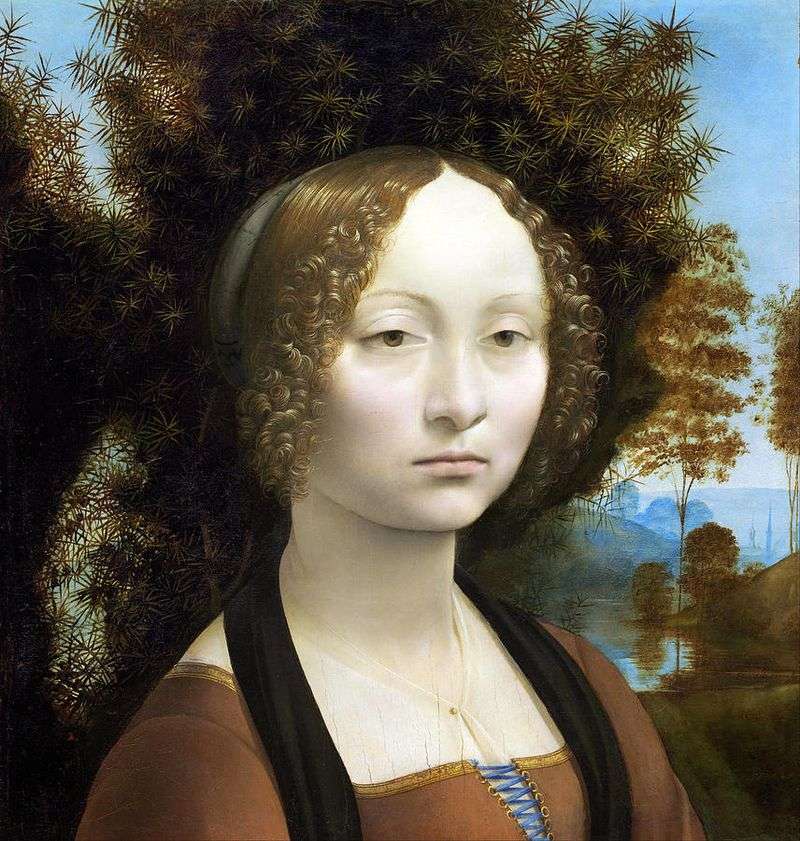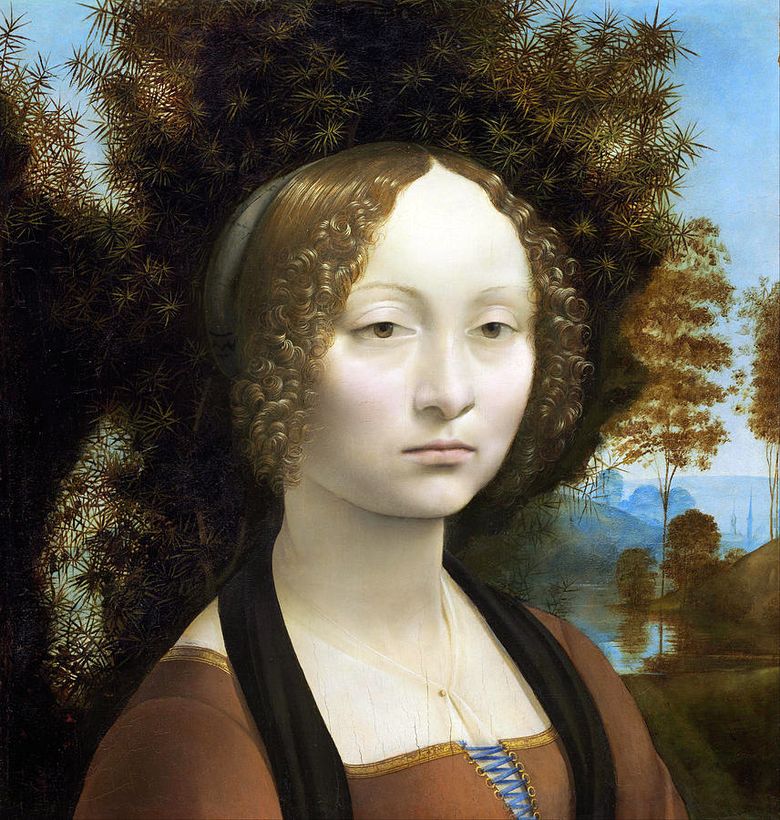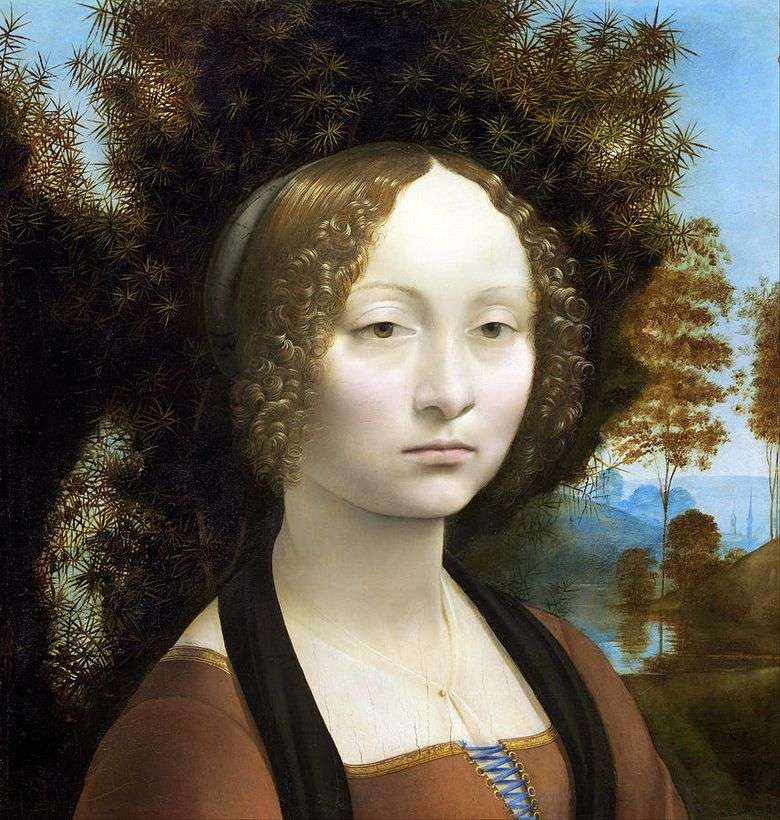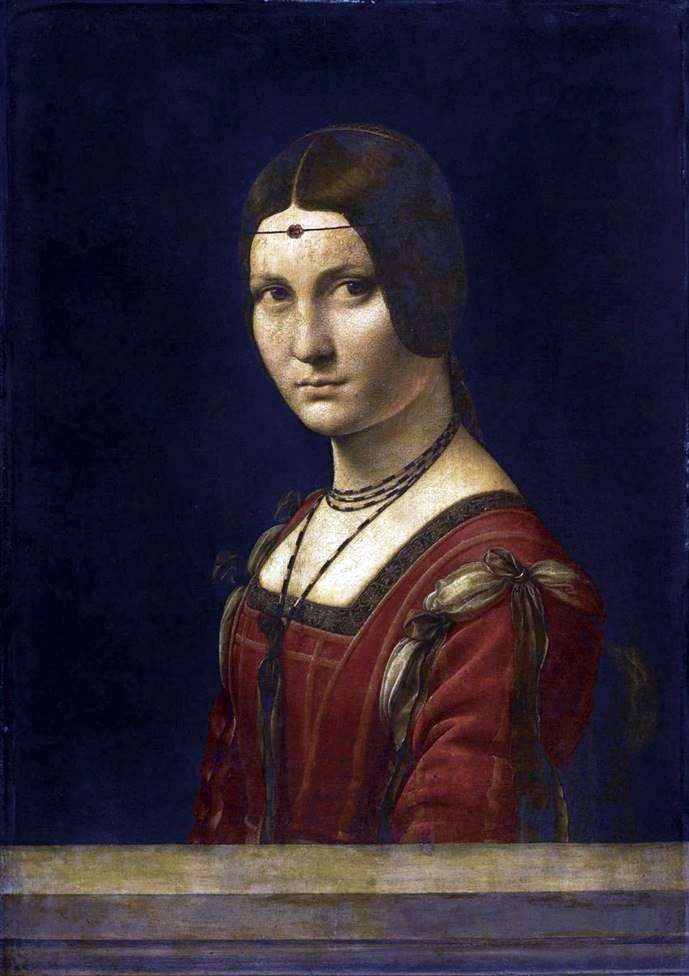
This portrait is one of the earliest works on a secular topic, about which there are documents confirming the authorship of Leonardo da Vinci. Ginerva de Bensi married at the age of 17 on 15 January 1474 for Luigi Niccolini, who was twice her age. The portrait is written for this occasion.
A young woman sits in front of a juniper bushes that seems to surround her head like a wreath and, undoubtedly, dominates the portrait of Ginevra. Interesting pallor is not the reception of the artist, but, according to some sources, a sign of a morbid constitution.
The word “ginepro” is in no way connected either with the surname of the woman or with the name of the customer of the portrait. Juniper is more than an ornamental companion. Like some other plants, juniper was a symbol of female dignity.
The portrait, showing the influence of the Old Dutch masters on the style and technique of performing nature, demonstrates the connection between female beauty and dignity. It is assumed that the portrait was somehow barbarically shortened at the bottom, where there were hands. There is a continuation on the back of the portrait, which is also a Picture. On artificial red marble, we see laurels, junipers and palm branches linked to each other by a garland with the words VIRTUTEM FORMA DECORAT: “Beauty adorns Virtue”.
A gentle face silhouette, palm branches, red marble, all emphasize the connection between beauty, dignity, chastity and faithfulness. The evergreen laurel points to Ginevra’s desire for poetry, which is known from the memoirs of contemporaries. But there is a version that the garland with the inscription is associated with Bernardo Bembo, then the Venetian ambassador in Florence who ordered a portrait of the bride and whose arms were present with palm branches.
 Ginevra Benci by Leonardo da Vinci
Ginevra Benci by Leonardo da Vinci Portrait de Ginerva de Bensi – Léonard de Vinci
Portrait de Ginerva de Bensi – Léonard de Vinci Self-portrait by Leonardo Da Vinci
Self-portrait by Leonardo Da Vinci Self Portrait by Leonardo Da Vinci
Self Portrait by Leonardo Da Vinci The lady with the ermine by Leonardo da Vinci
The lady with the ermine by Leonardo da Vinci Retrato de Zinerva de Bensi – Leonardo da Vinci
Retrato de Zinerva de Bensi – Leonardo da Vinci Mona Lisa by Leonardo Da Vinci
Mona Lisa by Leonardo Da Vinci Beautiful Ferronera by Leonardo Da Vinci
Beautiful Ferronera by Leonardo Da Vinci